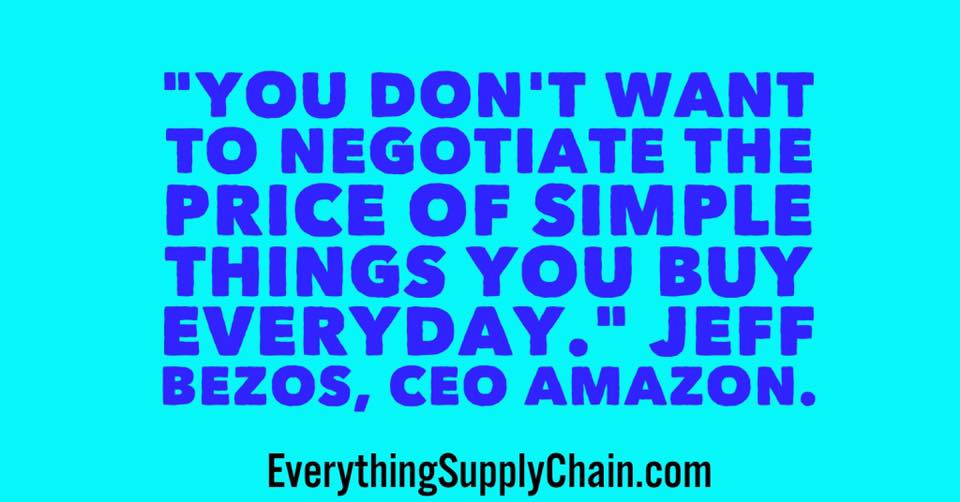Need Supplier Management and Procurement Training? Try these resources.
Supplier management and procurement refer to the processes of identifying, evaluating, and selecting suppliers, and managing the relationship with those suppliers to ensure that they can provide the goods and services that are needed to meet the organization’s objectives.
Some key elements of supplier management and procurement include:
- Identifying and evaluating potential suppliers: This involves researching and identifying potential suppliers, and evaluating their capabilities and capacity to meet the organization’s needs. This may include considering factors such as quality, cost, delivery, and reliability.
- Selecting suppliers: Once potential suppliers have been identified and evaluated, the next step is to select the most suitable supplier or suppliers. This may involve negotiating terms and conditions, such as price, delivery schedule, and payment terms.
- Managing the relationship with suppliers: Once a supplier has been selected, it is important to manage the relationship in a way that ensures that the supplier is meeting the organization’s needs. This may involve regular communication, performance monitoring, and the resolution of any issues that arise.
- Procurement: Procurement refers to the process of acquiring goods and services from external suppliers. This may involve issuing requests for proposals (RFPs), negotiating contracts, and placing orders with suppliers.
Overall, supplier management and procurement involve identifying, evaluating, selecting, and managing suppliers in a way that ensures that the organization has access to the goods and services that it needs to meet its objectives.
In this Procurement training we included strategic sourcing, negotiations, supplier selection and supplier management. The information found here goes from basic to experienced professionals. There is something for everyone. This video is a basic introduction into procurement. If you are a procurement professional jump to the procurement training below which is much more advanced.
Negotiation and Procurement Training
- Artificial Intelligence and Procurement.
- Cost Management.
- Five Easy Negotiating Tactics that will help you Win every time.
- Meaningful Involvement in Services Purchasing with Lisa Ellram.
- Negotiation Skills.*
- Negotiation – from Stanford Graduate School of Business.*
- Procurement supplier selection process (10 minute video).
- Procurement Training, Purchasing Training, Supply Chain Management Training.*
- Procurement with Blockchain? Machine Learning? Virtual Reality?
- Purchasing and Procurement Differences.
- Supplier Negotiations & TCO Strategies.
- Supply Chain Cost Saving Strategies, CAPS Research.
- Types of Procurement: Procurement Management.
- Typical negotiation mistakes of Procurement people.
- What is Procurement? | Procurement Process.
Tips to Negotiate Lower Real Estate Commission.
NAR Settlement Real Estate Changes.
Science Of Persuasion – Improve Your Negotiation Skills
Supplier Management and Development Training.
- 7 Tips for Successful Supplier Relationship Management.
- Procurement supplier selection process (10 minute video).
- Strategic Sourcing and Better Contract Negotiations.
- Strategic Sourcing for Successful Supply Chain Management.
- Supplier Selection and Certification
- Supplier Selection and Supply Chain Management.
Evaluate Supplier Performance.
In order to get the most out of suppliers it is important to decrease the supplier base and work closely with existing suppliers. Use the following information to evaluate supplier performance.
PRIMARY MEASURES
|
|
Questions for Supplier Development/Management
- Works closely to lower overall costs
- Provides market/product knowledge/information along with service and support
- Supplier identifies opportunities to decrease costs and suggests ideas on ways to improve the supply chain.
- Performs joint cost-reduction/quality improvement programs
- Supplier can deliver products across various geographic regions
- Shares data and supplies resources to locate and solve problems.
- Deliveries meet deadlines and do not need to be expedited to meet delivery time.
- Supplier readily shares cost information.
- Recognizes potential opportunities to incorporate new ideas.
- Supplier is involved with product in early stages of design
- Supplier implements procedures for controlling fluctuations in raw material costs
- Provides technical support for production/quality problems
- Supplier gives ideas and suggestions during initial stages of product development
- Proactive in offering innovative and alternative technologies
- Supplier is proactive in finding problems and discovering solutions
- Supplier gives feedback on quotations to reduce costs
- High interest in joint problem solving.
- Reacts quickly and effectively to problems and proactive to finding solutions
- Supplier is flexible and adjust to special requests when needed
- Responds quickly and effectively under adverse situations.
- Supplier keeps the lines of communication open and lets customers know when problems may occur
- Expedites emergency orders in a timely manner
- Suppliers do what they say and are trustworthy
- Proactive in communicating forecasts for planning and deliveries
- Suppliers’ technology roadmap aligns with the company’s current IT initiatives
- Capable to exchange information through the Internet
- Proactive in providing value added proposals
- Supplier provides innovative suggestions for improvements and anticipates future problems
- Participates in joint development efforts
- Provides technological assistance and engineering support
- Supplier is willing to provide rapid modeling and prototype capabilities
- What is the financial feasibility of the company
- What is the vendor’s reputation in the industry
- Is the quality worth the price
- Is the product over engineered
- Does the supplier have a quality system in place
- Is there a quality improvement plan in place
- Does the vendor meet delivery and cycle time goals
- Does the supplier try to reduce lead times
- Are there processes for controlling and leveraging raw material cost
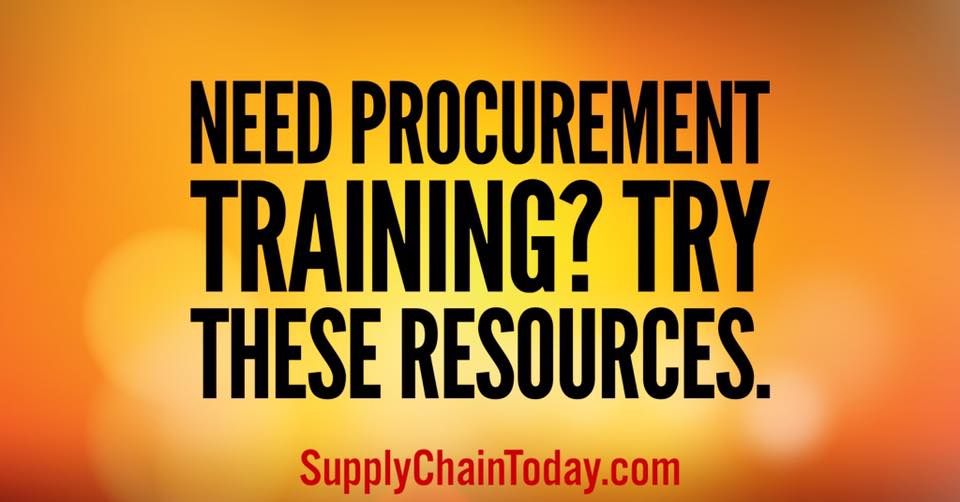
“Train your procurement organization well. This investment can save millions of dollars.”
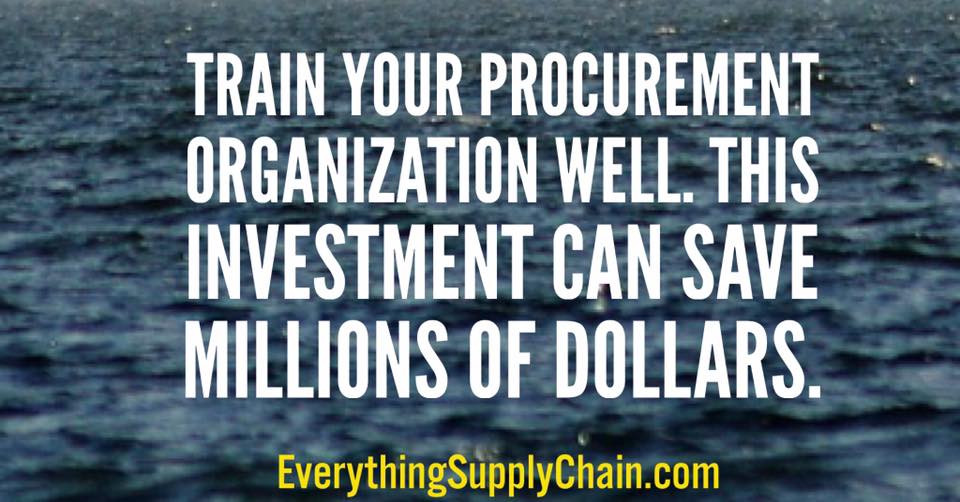
“Strategic sourcing in the simplest terms – leveraging all resources to get the best value for the company.”
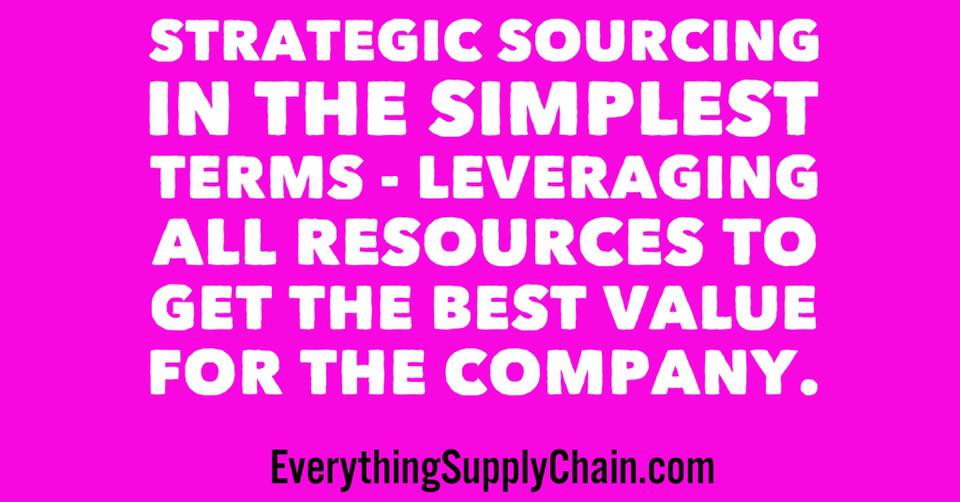
“A well trained procurement organization can add major dollars to the organization through cost savings.”
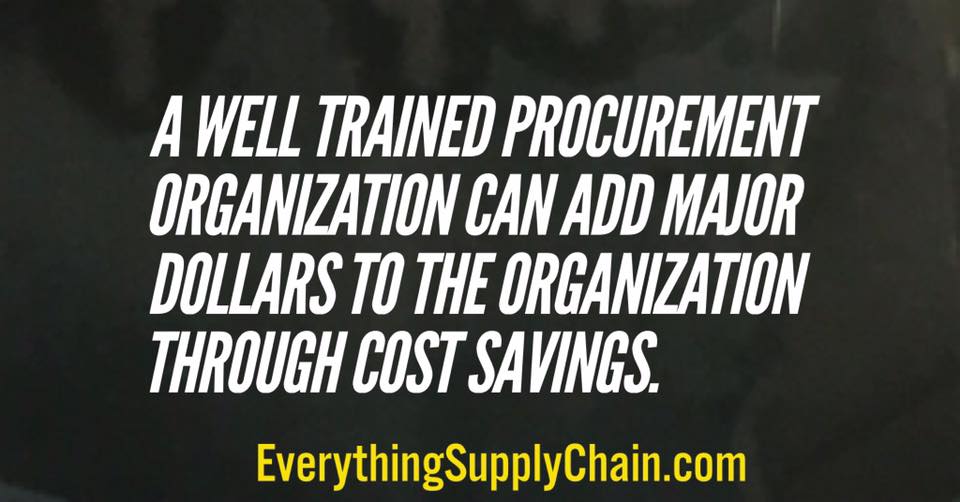
“Price is what you pay. Value is what you get.” ~Warren Buffett
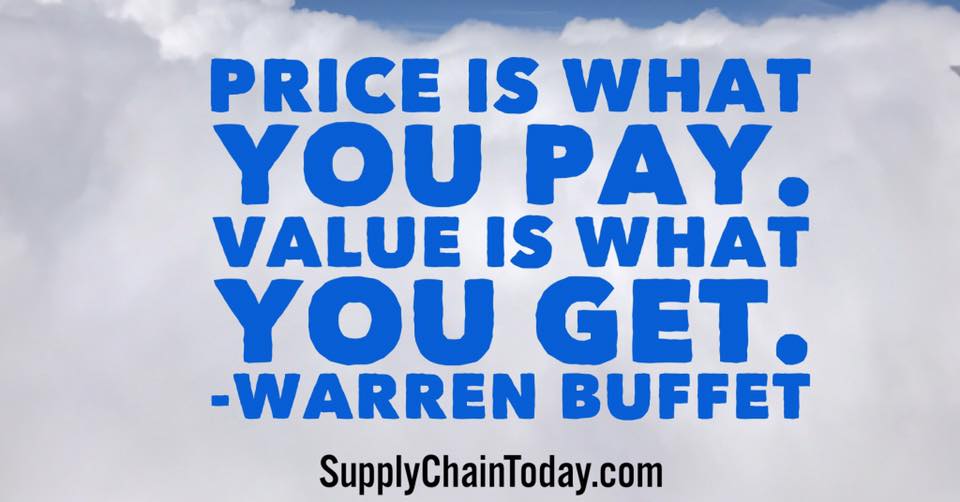
“When you surround an army, leave an outlet free. Do not press a desperate foe too hard.” ~Sun Tzu

“You don’t want to negotiate the price of simple things you buy everyday.” ~Jeff Bezos
